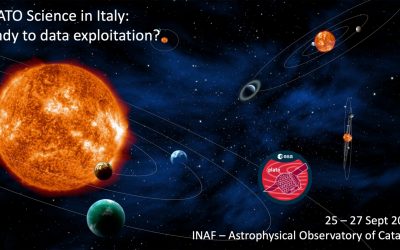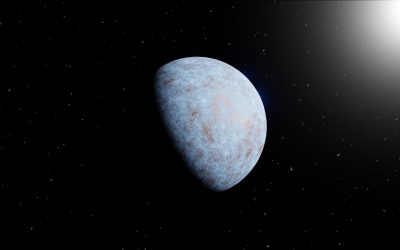Extrasolar Planets and Astrobiology
News
First ‘glory’ on hellish distant world?
For the first time, potential signs of the rainbow-like ‘glory effect’ have been detected on a planet outside our Solar System. Glory are colourful concentric rings of light that occur only under peculiar conditions.
Data from ESA’s sensitive Characterising ExOplanet Satellite, Cheops, along with several other ESA and NASA missions, suggest this delicate phenomenon is beaming straight at Earth from the hellish atmosphere of ultra-hot gas giant WASP-76b, 637 light-years away.
Seen often on Earth, the effect has only been found once on another planet, Venus. If confirmed, this first extrasolar glory will reveal more about the nature of this puzzling exoplanet, with exciting lessons for how to better understand strange, distant worlds.
Ten Camera Flight Models ready for integration: names unveiled
How many earth-like planets orbit the habitable zone of solar-like stars? How planets form and evolve in their planetary systems? What about the interaction with their stars? These are among the questions the ESA PLATO mission is called to answer, through exquisite...
Groundbreaking survey reveals secrets of planet birth around dozens of stars
In a series of studies, a team of astronomers has shed new light on the fascinating and complex process of planet formation. The stunning images, captured using the European Southern Observatory's Very Large Telescope (ESO’s VLT) in Chile, represent one of the largest...
ESA’s Cheops helps unlock rare six-planet system
A rare star system with six exoplanets has been unlocked with the help of ESA’s Cheops mission. The discovery is particularly valuable because the planets’ orbital configuration shows that the system is largely unchanged since its formation more than a billion years ago.
PLATO Science in Italy: ready to data exploitation?
From 25 to 27 September, the INAF-Astrophysical Observatory of Catania will host a workshop dedicated to PLATO, the 3rd mission of class M in the ESA Cosmic Vision program. Its main goal is detecting terrestrial planets in the habitable zone of solar type stars. With...
The densest Neptunian ever observed
Its name is Toi-1853b and it is extremely peculiar: every 30 hours it completes one complete revolution around its star (the Earth takes a year to complete one complete revolution around the Sun), it has a radius comparable to Neptune's (3.5 Earth radii, hence the...
Cheops shows scorching exoplanet acts like a mirror
Data from ESA’s exoplanet mission Cheops has led to the surprising revelation that an ultra-hot exoplanet that orbits its host star in less than a day is covered by reflective clouds of metal, making it the shiniest exoplanet ever found.
Cheops explores mysterious warm mini-Neptunes
ESA’s exoplanet mission Cheops confirmed the existence of four warm exoplanets orbiting four stars in our Milky Way. These exoplanets have sizes between Earth and Neptune and orbit their stars closer than Mercury our Sun. These so-called mini-Neptunes are unlike any...
JUICE: JANUS sent its first images acquired in space
The instrument Jovis, Amorum ac Natorum Undique Scrutator (JANUS) passed the commissioning phase with full marks. It is a real test during which – 8 million km from the Earth – it opened its electronic “eyes”, sending the so-called “first light”, i.e. his first series of images, to the technicians and researchers
Personnel
Mario Accolla, Giuseppe Baratta, Giovanni Bruno, Carla Buemi, Fabio Del Sordo, Antonio Frasca, Antonino F. Lanza, Giuseppe Leto, Paolo Leto, Sergio Messina, Isabella Pagano, Maria Elisabetta Palumbo, Ricardo Z. Sanchez, Gaetano Scandariato, Carlotta Scirè, Daniela Sicilia, Vikash Singh, Corrado Trigilio, Grazia Umana
Contatti
Osservatorio Astrofisico di Catania
Via Santa Sofia 78, 95123 Catania, Italia
(+39) 095.7332111
segreteria.direzione.oact@inaf.it
(PEC): inafoacatania@pcert.postecert.it
Per informazioni sul nostro sito: web.oact@inaf.it
Per informazioni sulla didattica e divulgazione: divulgazione.oact@inaf.it








